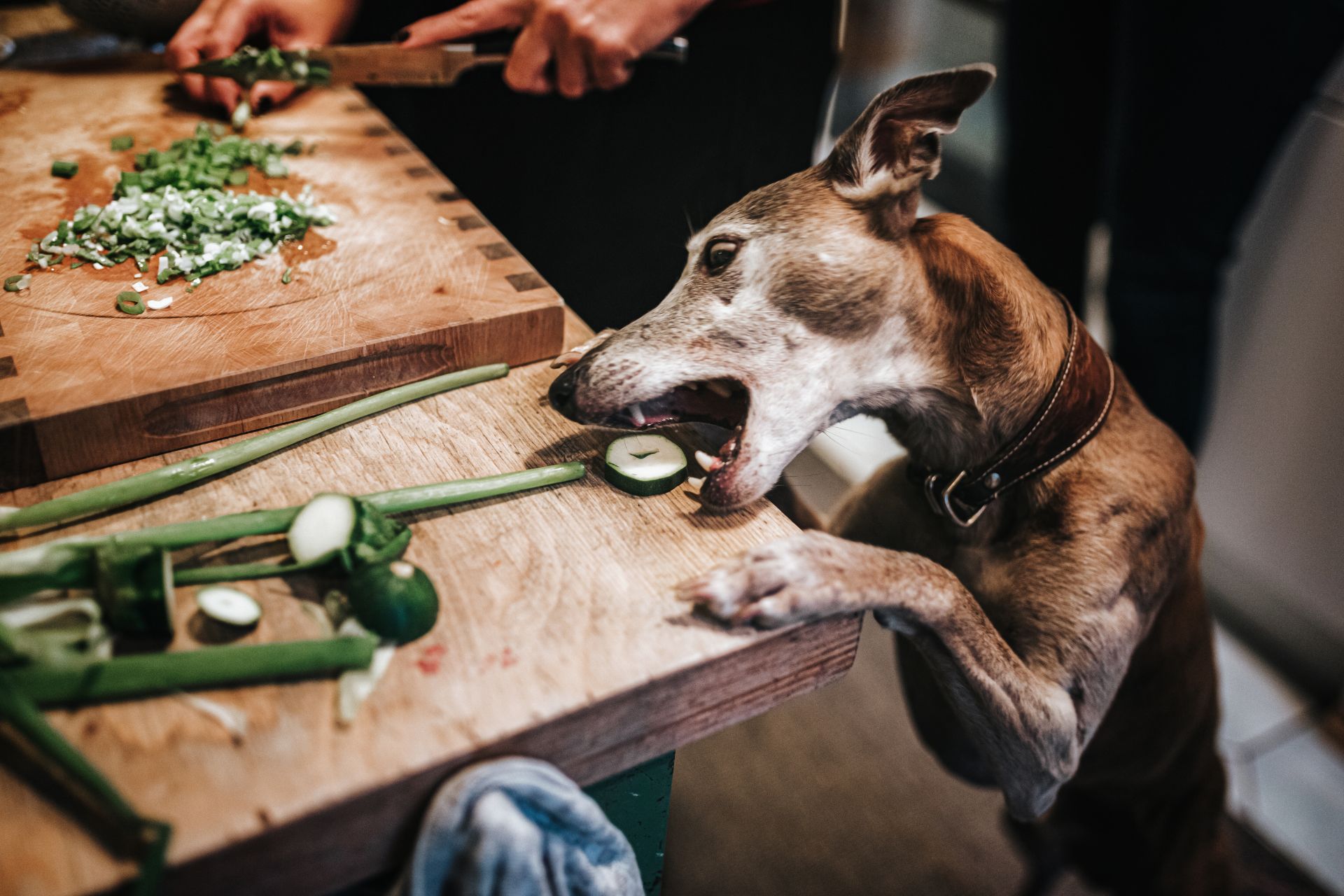Veggies to Avoid for Dogs: A Complete Guide
Do you love sharing your food with your furry friend? Do you think that giving your dog some vegetables is a good way to boost their health and nutrition? If so, you’re not alone. Many dog owners like to feed their dogs vegetables as treats or supplements, believing that they are safe and beneficial for their canine companions.
However, not all vegetables are created equal when it comes to dogs. While some veggies can provide your dog with vitamins, minerals, antioxidants, and fiber, others can be toxic or harmful for them. Some vegetables can even cause serious health problems or even death in dogs.
So how do you know what veggies to avoid feeding your dog? And what veggies can you safely feed them? In this article, we’ll answer these questions and more. We’ll explain the benefits and risks of feeding vegetables to dogs, and provide you with a list of the best and worst veggies for dogs. We’ll also give you some tips on how to feed vegetables to dogs safely and moderately.
By the end of this article, you’ll have a better understanding of what veggies to avoid feeding your dog, and what veggies to feed them instead. You’ll also learn how to make your dog’s diet more balanced and healthy, without compromising their safety or well-being.
Contents
How to Feed Dogs Vegetables Safely and Moderately
Before we dive into the list of what veggies to avoid feeding your dog, let’s first talk about how to feed dogs vegetables in general. After all, vegetables are not a natural part of a dog’s diet, and they may not be suitable for every dog.
Dogs are omnivores, which means they can eat both animal and plant-based foods. However, they are primarily carnivores, which means they need meat as their main source of protein and energy. Unlike humans, dogs do not need vegetables as part of their balanced diet. In fact, too many vegetables can cause digestive issues or nutritional imbalances in dogs.
That doesn’t mean that you can’t feed your dog any vegetables at all. Some vegetables can be a great addition to your dog’s diet, as long as you follow some general guidelines:
- Wash the vegetables thoroughly before feeding them to your dog. This will remove any dirt, pesticides, or bacteria that may be harmful for them.
- Chop or puree the vegetables into small pieces or slices before feeding them to your dog. This will make them easier to digest and prevent choking hazards.
- Cook the vegetables before feeding them to your dog. This will soften them and break down some of the fibers that may be hard for your dog to digest. Avoid adding any sugar, salt, butter, or spices that may upset your dog’s stomach or cause health problems.
- Serve the vegetables plain or mixed with your dog’s regular food. Do not use vegetables as a substitute for your dog’s main meal. Vegetables should only make up 10% or less of your dog’s daily calorie intake.
- Introduce new vegetables gradually and monitor your dog’s reaction. Start with small amounts and increase them slowly over time. Watch out for any signs of allergies or intolerance, such as itching, vomiting, diarrhea, or gas. If you notice any of these symptoms, stop feeding that vegetable to your dog and consult your vet.
What Veggies Can Dogs Eat?
Now that you know how to feed dogs vegetables safely and moderately, let’s take a look at some of the common and safe vegetables for dogs. These veggies can provide your dog with some extra nutrients and health benefits, as well as some variety and flavor in their diet.
Here are some of the best veggies for dogs:
Carrots
Dogs are usually big fans of carrots, which are sweet, crunchy, and fun to chew on. You can feed them fresh, cooked, or frozen (as a refreshing summer treat). Just make sure to cut them into small pieces or slices to prevent choking.
Benefits:
- Carrots are an excellent source of vitamin A, which helps improve your dog’s vision, skin, coat, and immune system.
- Carrots also contain vitamin K, potassium, and manganese, which support your dog’s bone health, blood clotting, and metabolism.
- Carrots are high in fiber, which helps regulate your dog’s digestion and bowel movements.
- Carrots can also help improve your dog’s dental health by gently scraping their teeth and removing plaque.
Green Beans
Green beans are another popular vegetable for dogs. They are low in calories and high in nutrients. You can feed them fresh (raw or cooked), canned (without salt), or frozen (thawed).
Benefits:
- Green beans are rich in vitamin C, which helps boost your dog’s immune system and fight infections.
- Green beans also contain vitamin K, magnesium, iron, and calcium, which support your dog’s bone health, muscle function, blood circulation, and nerve transmission.
- Green beans are high in fiber, which helps keep your dog feeling full and satisfied.
- Green beans can also help your dog lose weight by providing a low-fat and low-calorie snack.
Peas
Peas are technically legumes, not vegetables, but they are still worthy of a spot on this list. Many dogs enjoy eating peas, whether fresh, frozen, or cooked. Just avoid canned peas, as they may have added salt or preservatives.
Benefits:
- Peas are a good source of protein, which helps build and maintain your dog’s muscles and tissues.
- Peas also contain vitamin A, vitamin C, vitamin K, and vitamin B complex, which help support your dog’s vision, skin, coat, immune system, and nervous system.
- Peas are high in fiber, which helps regulate your dog’s digestion and bowel movements.
- Peas are also high in antioxidants, which help protect your dog’s cells from damage and aging.
Cucumber
Cucumber is a low-calorie vegetable that is mostly water. It can help hydrate your dog and provide some vitamins and minerals. You can feed it raw or cooked, but make sure to cut it into small pieces or slices to prevent choking.
Benefits:
- Cucumber contains vitamin C, which helps boost your dog’s immune system and fight infections.
- Cucumber also contains vitamin K, potassium, and magnesium, which support your dog’s bone health, blood pressure, and muscle function.
- Cucumber can also help freshen your dog’s breath and reduce inflammation.
What Veggies Can Dogs Not Eat?
While the veggies listed above are safe and beneficial for dogs, there are some veggies that you should never feed your dog. These veggies can be toxic or harmful for dogs, and can cause serious health problems or even death.
Here are some of the worst veggies for dogs:
Onions
Onions are one of the most dangerous vegetables for dogs. They belong to the allium family, which also includes garlic, leeks, chives, and shallots. These vegetables contain a substance called thiosulfate, which can damage your dog’s red blood cells and cause hemolytic anemia. This is a condition where your dog’s body destroys its own blood cells, leading to weakness, lethargy, pale gums, rapid breathing, vomiting, diarrhea, and collapse.
Onions are toxic to dogs in any form: raw, cooked, dried, or powdered. Even small amounts can be harmful, especially if consumed regularly. If your dog eats any amount of onion, contact your vet immediately.
Garlic
Garlic is another member of the allium family that is toxic to dogs. It contains the same substance as onions (thiosulfate), but in a higher concentration. Therefore, garlic is more potent and dangerous than onions for dogs.
Garlic can cause the same symptoms as onions in dogs: hemolytic anemia, weakness, lethargy, pale gums, rapid breathing, vomiting, diarrhea, and collapse. Garlic is toxic to dogs in any form: raw, cooked, dried, or powdered. Even small amounts can be harmful, especially if consumed regularly. If your dog eats any amount of garlic, contact your vet immediately.
Mushrooms
Mushrooms are a type of fungus that can be found in the wild or cultivated for human consumption. While some mushrooms are edible and safe for dogs, others are poisonous and deadly. It can be hard to tell the difference between safe and unsafe mushrooms, so it’s best to avoid feeding any mushrooms to your dog.
Mushrooms can contain various toxins that can affect different organs and systems in your dog’s body. Some of the symptoms of mushroom poisoning in dogs include vomiting, diarrhea, abdominal pain, drooling, tremors, seizures, coma, liver failure, kidney failure, and death.
If your dog eats any mushroom (wild or cultivated), contact your vet immediately.
Rhubarb
Rhubarb is a vegetable that is often used in pies and desserts. However, it is not safe for dogs to eat. Rhubarb contains oxalic acid, which is a natural compound that can cause kidney damage in dogs. Oxalic acid can also interfere with the absorption of calcium in your dog’s body, leading to calcium deficiency and bone problems.
Rhubarb can cause symptoms such as vomiting, diarrhea, drooling, weakness, tremors, bloody urine, kidney failure, and death in dogs. The leaves of rhubarb are especially toxic to dogs (and humans), but the stems are also dangerous. If your dog eats any part of rhubarb (raw or cooked), contact your vet immediately.
What Veggies Should Dogs Eat Sparingly or Occasionally?
Some veggies are not toxic or harmful for dogs, but they can cause digestive issues or other problems if fed in large amounts or too frequently. These veggies should be fed sparingly or occasionally to dogs, and only after consulting your vet.
Here are some of the veggies that dogs should eat sparingly or occasionally:
Broccoli
Broccoli is a good source of fiber, vitamins A, C, E, and K, and contains almost no fat. However, it also contains isothiocyanate, a natural compound that is present in all cruciferous veggies such as cabbage, cauliflower, and kale. Isothiocyanate can cause stomach pain, gas, bloating, and diarrhea in some dogs, especially if they eat too much broccoli.
Broccoli should be chopped into small pieces and cooked before feeding it to your dog. It should also be fed in moderation, as it can interfere with your dog’s thyroid function if consumed in large amounts. If your dog shows any signs of discomfort or intolerance after eating broccoli, stop feeding it to them and contact your vet.
Cabbage
Cabbage is another cruciferous vegetable that contains isothiocyanate and can cause digestive problems for dogs. It can also cause flatulence and bad breath in dogs. Cabbage should be cooked well and served plain before feeding it to your dog. It should also be fed in moderation, as it can interfere with your dog’s thyroid function if consumed in large amounts.
Cabbage can provide some benefits for dogs, such as vitamin C, vitamin K, and phytonutrients that can improve their overall health. However, it is not a necessary part of their diet and should be treated as an occasional treat.
Kale
Kale is a leafy green vegetable that is high in vitamin A, vitamin C, vitamin K, iron, calcium, and antioxidants. However, it also contains isothiocyanate and oxalic acid, which can cause digestive issues and kidney damage in dogs. Kale should be cooked well and served plain before feeding it to your dog. It should also be fed in moderation, as it can interfere with your dog’s thyroid function and calcium absorption if consumed in large amounts.
Kale can provide some benefits for dogs, such as boosting their immune system and fighting inflammation. However, it is not a necessary part of their diet and should be treated as an occasional treat.
Sweet Potato
Sweet potato is a starchy vegetable that is high in vitamin A, vitamin C, fiber, and antioxidants. However, it is also high in sugar and calories, which can cause obesity and diabetes in dogs. Sweet potato should be cooked well and served plain before feeding it to your dog. It should also be fed sparingly as a treat or supplement, not as a staple food.
Sweet potato can provide some benefits for dogs, such as supporting their digestive health, immune system, and skin health. However, it is not a necessary part of their diet and should be treated as an occasional treat.
Conclusion
Vegetables can be a great addition to your dog’s diet if you know what veggies to avoid feeding your dog and what veggies to feed them safely and moderately. Some vegetables can provide your dog with extra nutrients and health benefits while others can be toxic or harmful for them.
Before you feed any vegetable to your dog make sure to:
- Wash the vegetable thoroughly
- Chop or puree the vegetable into small pieces or slices
- Cook the vegetable well
- Serve the vegetable plain or mixed with your dog’s regular food
- Introduce new vegetables gradually
- Monitor your dog’s reaction
- Consult your vet
Remember that vegetables are not a necessary part of your dog’s balanced diet and they should only make up 10% or less of their daily calorie intake. Always feed your dog high-quality dog food that meets their nutritional needs and preferences.
We hope this article has helped you learn what veggies to avoid feeding your dog and what veggies to feed them instead. If you have any questions or feedback please leave them in the comments section below.
FAQs
Here are some common questions about feeding vegetables to dogs:
Q: Can dogs eat onions?
A: No, dogs should never eat onions or any other member of the allium family, such as garlic, leeks, chives, or shallots. These vegetables contain a substance called thiosulfate, which can damage your dog’s red blood cells and cause hemolytic anemia. This is a condition where your dog’s body destroys its own blood cells, leading to weakness, lethargy, pale gums, rapid breathing, vomiting, diarrhea, and collapse. Onions are toxic to dogs in any form: raw, cooked, dried, or powdered. Even small amounts can be harmful, especially if consumed regularly. If your dog eats any amount of onion, contact your vet immediately.
Q: Can dogs eat quinoa?
A: Yes, dogs can eat quinoa in small amounts. Quinoa is a gluten-free grain that is high in protein, fiber, iron, and antioxidants. It can be a good alternative to rice or oats for dogs with allergies or sensitivities. However, quinoa should be cooked well and rinsed thoroughly before feeding it to your dog, as it contains saponins, which are natural compounds that can cause irritation in your dog’s digestive system. Quinoa should also be fed sparingly as a treat or supplement, not as a staple food.
Q: Can dogs eat cucumber?
A: Yes, dogs can eat cucumber. Cucumber is a low-calorie vegetable that is mostly water. It can help hydrate your dog and provide some vitamins and minerals. You can feed it raw or cooked, but make sure to cut it into small pieces or slices to prevent choking.
Q: Can dogs eat celery?
A: Yes, dogs can eat celery. Celery is a crunchy vegetable that is rich in vitamin A, which helps improve your dog’s vision, skin, coat, and immune system. It also contains vitamin K, potassium, and manganese, which support your dog’s bone health, blood clotting, and metabolism. Celery is high in fiber, which helps regulate your dog’s digestion and bowel movements. Celery can also help improve your dog’s dental health by gently scraping their teeth and removing plaque.
Celery is safe for dogs to eat raw or cooked, but make sure to chop it into small pieces or puree it to make it easier to digest and prevent choking. Celery is also a natural diuretic, so if fed in large amounts, it can make your dog urinate more frequently.
Q: Can dogs eat sweet potato?
A: Yes, dogs can eat sweet potato in moderation. Sweet potato is a starchy vegetable that is high in vitamin A, vitamin C, fiber, and antioxidants. It can help support your dog’s digestive health, immune system, and skin health. However, sweet potato is also high in sugar and calories, which can cause obesity and diabetes in dogs. Sweet potato should be cooked well and served plain, without any added sugar, salt, butter, or spices. Too much sweet potato can cause diarrhea, gas, or obesity in dogs. It can also interfere with your dog’s absorption of other nutrients, such as vitamin E and calcium.




